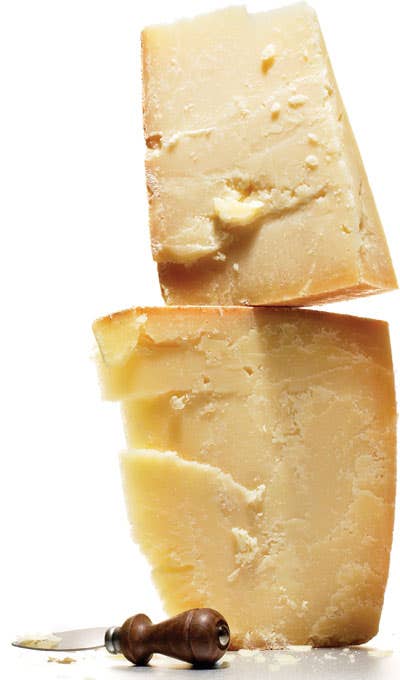
A new addition to the country's pantheon of fine cheeses
I often think of parmigiano-reggiano as the greatest of all cheeses, an opinion shared by turophiles around the world. I love it as a snack, its nutty crunch combining beautifully with roasted almonds or aged balsamic vinegar, but I also treasure the way a generous grating melts seductively into eggplant parmigiana, and how it elevates most any pasta dish. Though I didn't think it possible, I recently discovered another Italian cheese that vies with parmigiano for preeminence: Pecorino gran cru, a sheep's-milk cheese with a wonderfully round, mouth-filling flavor and caramel overtones that linger on the palate. A relatively new creation, it's the result of a collaboration between Academia Barilla, the specialty-foods division of the Barilla pasta company, and a cooperative of hundreds of small sheep farms located in the hills above Sassari, on the island of Sardinia.
Pecorino is simply the Italian name for any cheese made from the milk of a sheep (pecora). But there are many kinds of pecorino, from the two-week-old, soft pecorino fresco to the long-aged pecorino di fossa, which is buried underground for several months to intensify its flavor. Sardinia is one of the most renowned areas for pecorino production, and gran cru hails from the island's northwest corner, where an indigenous breed of sheep called pecora sarda graze on wild herbs and grasses in the hills overlooking the sea. The fragrant plants lend great depth to the cheese, depth that is further emphasized by long aging.
The pecorino that most Americans know is pecorino romano, a firm, salty cheese used for grating. What's fascinating about gran cru is that it's made like the far more nuanced parmigiano-reggiano, from milk that is collected in the evening and left at an ambient temperature overnight. By the next day, the fat rises to the top, and the milk is skimmed, combined with full-fat milk from the morning's milking, and turned into the curds that will become cheese. The cheeses are formed into enormous wheels that weigh 36 pounds after aging—at least 20 months, in the case of gran cru— in warehouses, on wooden planks. The result of this process is a pecorino that is at once fruity and savory, robust and complex.
Gran cru, like other fine aged cheeses, sparkles with bits of a crystallized protein called tyrosine that develops from aging and gives a pleasant crackle. Though one might be tempted to grate the cheese over pasta, I prefer to eat it on its own. It's excellent with cured meat or savored with a glass of wine before dinner. On summer evenings, when the thought of a heavy dessert is just too much, I serve pecorino gran cru with a dribble of chestnut honey as the meal's singular finale. A one-pound block costs $17.50 plus shipping; visit shop.academiabarilla.com.
Keep Reading
Continue to Next Story










